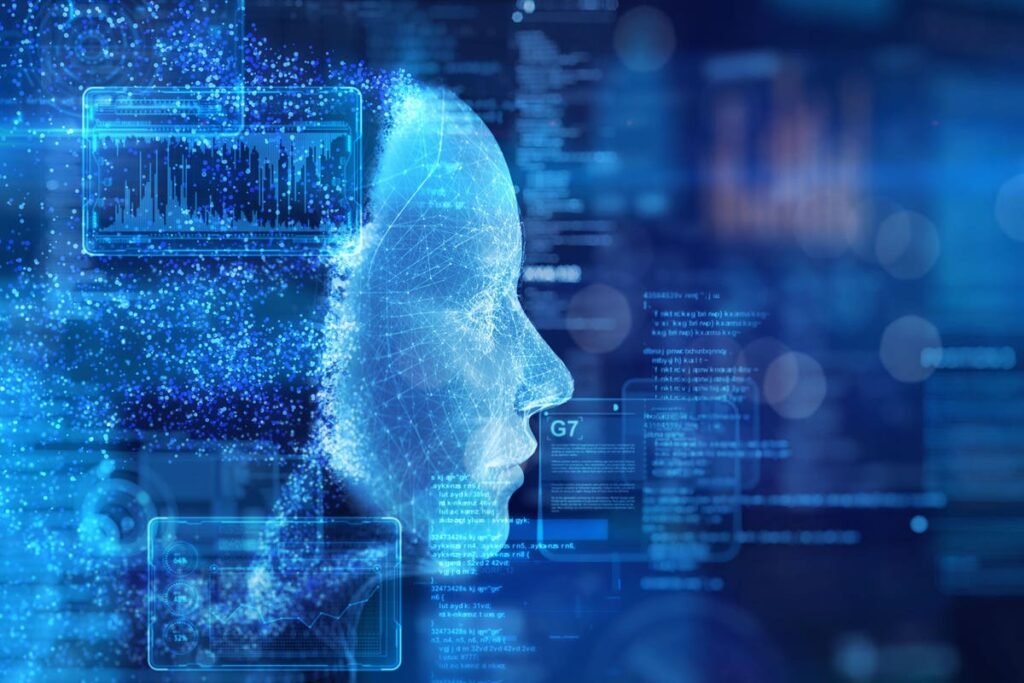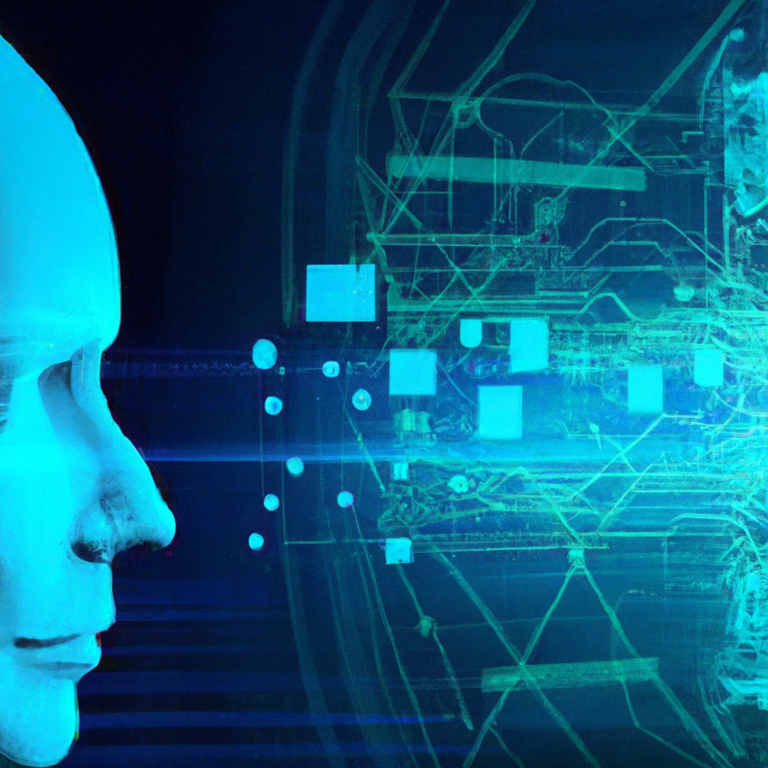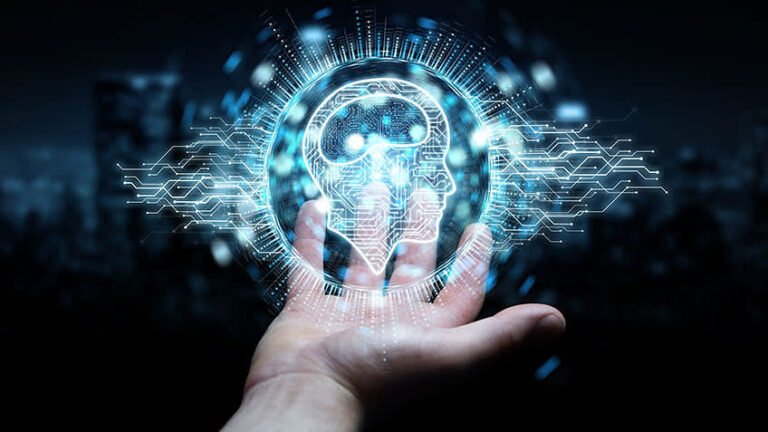The Future Of Artificial Intelligence.

Artificial intelligence (AI), the cutting-edge technology that aims to replicate human intelligence in machines, has become the talk of the town lately. From self-driving cars to virtual assistants, AI has made remarkable advances in just a matter of years, captivating the minds of both tech enthusiasts and everyday individuals alike. As we stand on the brink of a fascinating era, where the possibilities seem endless, it is intriguing to ponder what lies ahead for artificial intelligence. In this article, we will take a closer look at how AI is shaping our world, explore its potential applications, and unravel the exciting prospects it holds for the future.

This image is property of www.simplilearn.com.
1. Understanding Artificial Intelligence
1.1 What is Artificial Intelligence?
Artificial Intelligence (AI) refers to the development of computer systems that can perform tasks that typically require human intelligence. These systems are designed to mimic human cognition by utilizing various techniques such as machine learning, neural networks, and natural language processing. The goal of AI is to enable machines to think, learn, and make decisions like humans, and to perform tasks more efficiently and accurately.
1.2 Current Applications of Artificial Intelligence
AI has already made a significant impact in various fields, including healthcare, finance, transportation, and entertainment. In healthcare, AI is being used for medical imaging, diagnosis, and drug discovery. AI-powered virtual assistants like Siri, Alexa, and Google Assistant have become an integral part of our daily lives, making tasks such as voice commands, information retrieval, and home automation much more convenient. In the finance industry, AI is used for fraud detection, risk assessment, and algorithmic trading.
1.3 Advantages and Limitations of Artificial Intelligence
There are numerous advantages to incorporating AI into various industries. AI can perform tasks with speed and accuracy, leading to increased efficiency and productivity. It can also analyze vast amounts of data, identify patterns, and make predictions, enabling better decision-making. Additionally, AI has the potential to replace dangerous or repetitive human tasks, reducing the risk of accidents and improving safety.
However, AI also has its limitations. One challenge is the inability of AI systems to handle unexpected situations or tasks outside their training data. AI also faces ethical concerns, such as bias in algorithms and potential job displacement. It is important to carefully consider these limitations and address potential risks and challenges before widespread adoption of AI technologies.
2. The Evolution of Artificial Intelligence
2.1 From Rule-Based Systems to Machine Learning
In the early days of AI, rule-based systems were predominant. These systems relied on a set of predefined rules and logic to make decisions or solve problems. However, they were limited in their ability to handle complex tasks that required a high degree of human-like intelligence.
The advent of machine learning brought a revolutionary change to AI. Machine learning algorithms enable computers to learn patterns and make predictions based on training data. This approach allows AI systems to adapt and improve their performance over time, without the need for explicit programming. Machine learning has greatly expanded the capabilities of AI and has paved the way for many modern AI applications.
2.2 Neural Networks and Deep Learning
Neural networks, inspired by the structure and functioning of the human brain, have played a crucial role in advancing AI. Neural networks consist of interconnected layers of artificial neurons that mimic the behavior of biological neurons. These networks can learn complex patterns and relationships in data, enabling tasks such as image recognition, natural language processing, and speech synthesis.
Deep learning is a subset of machine learning that utilizes neural networks with multiple layers. This allows for hierarchical learning, where each layer extracts increasingly abstract features from the input data. Deep learning has achieved remarkable success in various domains, including computer vision, natural language processing, and robotics.
2.3 Reinforcement Learning and Generative Adversarial Networks
Reinforcement learning is a branch of AI that focuses on enabling agents to learn through interactions with their environment. In reinforcement learning, an agent takes actions in an environment to maximize a specified reward signal. Through trial and error, the agent learns the optimal actions to take in different situations. This approach has been successfully applied to a wide range of applications, including game playing, robotics, and autonomous vehicle control.
Generative Adversarial Networks (GANs) are another exciting development in AI. GANs consist of two neural networks – a generator and a discriminator – that work together in a competitive setting. The generator generates artificial samples (e.g., images, text) that resemble real samples, while the discriminator aims to distinguish between real and fake samples. GANs have shown great promise in generating realistic images, enhancing data synthesis capabilities in various domains.

This image is property of imageio.forbes.com.
3. Key Trends in Artificial Intelligence
3.1 Increased Processing Power and Data Availability
One of the key trends in AI is the exponential growth in processing power and the availability of big data. The advances in computer hardware, such as GPUs and specialized AI chips, have significantly boosted the performance of AI algorithms. Moreover, the proliferation of the internet and digital technologies has resulted in an enormous amount of data being generated, providing valuable resources for training AI models.
3.2 Internet of Things (IoT) and AI integration
The integration of AI with the Internet of Things (IoT) has opened up new possibilities for smart homes, cities, and industries. By combining AI algorithms with sensors, actuators, and data from interconnected devices, AI-powered systems can make intelligent decisions and automate processes in real-time. For example, AI can optimize energy consumption, enhance predictive maintenance, and enable smart transportation systems.
3.3 Ethical and Privacy Concerns
As AI continues to advance, ethical considerations and privacy concerns have become crucial topics for discussion. AI systems must be designed and developed with ethical guidelines in mind to ensure fairness, transparency, and accountability. Additionally, the use of personal data in AI algorithms raises privacy concerns, emphasizing the need for robust data protection regulations.
3.4 AI in Healthcare and Medicine
AI is poised to revolutionize the healthcare industry by improving diagnosis, treatment, and patient care. AI algorithms can analyze medical images, such as X-rays and MRIs, to detect abnormalities or assist in diagnosis. Moreover, AI-powered chatbots and virtual assistants can provide personalized healthcare advice and support. AI also holds great potential for drug discovery, genomics, and personalized medicine.
4. Impact of Artificial Intelligence on Industries
4.1 Automation and Job Displacement
AI-powered automation has the potential to transform various industries by streamlining processes and increasing productivity. Routine and manual tasks can be automated using AI, freeing up human workers to focus on more creative and complex tasks. However, there is concern about the potential displacement of jobs due to automation, highlighting the need for retraining and upskilling of the workforce.
4.2 Enhancing Customer Experience
AI has already made significant strides in enhancing customer experience across various industries. Chatbots and virtual assistants can provide personalized recommendations, answer queries, and resolve customer issues in real-time. AI-powered algorithms can analyze customer data to deliver personalized marketing campaigns and improve customer retention. By leveraging AI, businesses can provide seamless and tailored experiences to their customers.
4.3 Streamlining Business Operations
AI can streamline business operations by automating repetitive tasks, optimizing inventory management, and predicting supply chain disruptions. AI-powered analytics can analyze vast amounts of data to provide valuable insights for strategic decision-making. With AI, businesses can enhance operational efficiency, reduce costs, and improve overall performance.
4.4 Transforming Manufacturing Processes
AI technologies such as robotics, computer vision, and real-time monitoring systems are transforming the manufacturing industry. Robots and AI-powered machines can perform complex tasks with precision and speed, leading to increased productivity and improved quality control. AI-enabled predictive maintenance can help prevent breakdowns and optimize equipment performance, reducing downtime and costs.

This image is property of cdn.educba.com.
5. AI in Education
5.1 Personalized Learning and Adaptive Assessments
AI has the potential to revolutionize education by enabling personalized learning experiences for students. AI algorithms can analyze individual student data and tailor educational content and assessments based on their strengths, weaknesses, and learning pace. This personalized approach can enhance student engagement and improve learning outcomes.
5.2 Virtual Classrooms and Intelligent Tutors
The integration of AI with virtual classrooms and intelligent tutoring systems can provide customized support and feedback to students. AI-powered systems can analyze student responses, identify misconceptions, and provide targeted explanations or additional resources. These intelligent tutoring systems can adapt to each student’s learning style and pace, maximizing learning effectiveness.
5.3 AI for Administrative Tasks
AI can also assist in administrative tasks, such as grading, scheduling, and record-keeping. Automated grading systems powered by AI algorithms can provide timely feedback to students and save teachers valuable time. AI can also automate administrative processes, such as scheduling classes, managing student records, and generating reports, improving efficiency and reducing administrative burden.
6. AI and the Future of Work
6.1 Human-AI Collaboration
The future of work will involve a closer collaboration between humans and AI systems. AI can augment human capabilities by automating repetitive tasks, analyzing vast amounts of data, and providing valuable insights. This collaboration can lead to increased productivity, creativity, and innovation.
6.2 Upskilling and Reskilling the Workforce
As AI technologies continue to advance, there will be a growing need for upskilling and reskilling the workforce. Traditional jobs may undergo significant changes, and new job roles will emerge. It is crucial for individuals to acquire new skills and adapt to the changing job market. Lifelong learning and continuous upskilling will be key to ensuring employability in the AI-driven future.
6.3 Ethical Considerations in AI Workforce Integration
Integrating AI into the workforce raises ethical considerations that need to be addressed. For example, ethical guidelines should be defined to ensure fair treatment of workers and prevent biases in AI algorithms. Additionally, considerations around job displacement and the impact on marginalized communities should be taken into account. It is essential to develop responsible AI workforce integration strategies that prioritize ethical considerations.

This image is property of cdn.analyticsvidhya.com.
7. Artificial General Intelligence (AGI)
7.1 Definition and Challenges of AGI
Artificial General Intelligence (AGI) refers to AI systems that possess the ability to understand, learn, and apply knowledge across a wide range of tasks similar to a human being. AGI would be capable of human-like reasoning and problem-solving, surpassing the limitations of narrow AI systems. However, achieving AGI poses significant challenges, including the development of algorithms that can handle abstract reasoning, common sense understanding, and learning from limited data.
7.2 Potential Risks and Benefits
The development of AGI presents both potential risks and benefits. On the one hand, AGI has the potential to address complex societal challenges, such as disease eradication, climate change, and resource optimization. It can revolutionize industries, improve automation, and advance scientific discoveries. On the other hand, there are concerns about AGI surpassing human intelligence and the potential consequences if not carefully controlled or aligned with human values.
7.3 Current Research and Development
While we are yet to achieve AGI, there is ongoing research and development in this field. Organizations and researchers are exploring various approaches, including cognitive architectures, metalearning, and neuro-evolution, to develop AGI. The progress in AGI development is closely monitored to ensure responsible and ethical deployment of this powerful technology.
8. AI and the Society
8.1 AI Bias and Fairness
One of the significant challenges in AI development is the presence of biases in algorithms. AI systems are trained on data that may reflect existing biases and discrimination in society. This can lead to biased decision-making and perpetuate social inequalities. Ensuring fairness and addressing biases in AI algorithms is crucial to building a more inclusive and equitable society.
8.2 AI and Social Inequality
The widespread adoption of AI technologies can exacerbate social inequalities if not managed properly. AI job displacement and unequal access to AI technologies can widen the gap between the rich and the poor. It is essential to address these issues through policies that promote equal access to AI education, training, and opportunities, and to consider the ethical and societal implications of AI deployment.
8.3 AI in Law Enforcement and Security
AI has the potential to enhance law enforcement and security operations. Predictive policing algorithms can analyze crime data to identify high-risk areas and deploy resources efficiently. However, there are concerns about the potential for biases and infringement of privacy rights. Striking the right balance between public safety and individual rights is crucial in the deployment of AI in law enforcement and security.

This image is property of blog.imarticus.org.
9. Ethical Considerations in AI Development
9.1 Responsible AI Design and Development
Ethical considerations should be at the forefront of AI design and development. AI systems should be designed to align with human values, ensure transparency, and promote fairness. Developers should be aware of the potential impact of their algorithms and must proactively address issues such as biases, discrimination, and privacy concerns.
9.2 Transparency and Accountability
AI systems should be transparent and explainable to build trust and ensure accountability. Users should have insights into how AI systems make decisions and understand the underlying logic and algorithms. Additionally, mechanisms should be in place to hold developers and organizations accountable for the impact and consequences of AI systems.
9.3 Regulation and Governance
Regulation and governance are essential in ensuring responsible and ethical AI development and deployment. Policymakers should establish clear guidelines and standards for AI technologies, addressing issues of privacy, bias, safety, and accountability. Collaboration between governments, industry, and academia is crucial to developing effective regulations and promoting responsible AI adoption.
10. The Future of Artificial Intelligence
10.1 Speculations and Predictions
The future of artificial intelligence holds immense potential and possibilities. Speculations include advancements in AGI, breakthroughs in quantum computing for AI, and the emergence of new AI paradigms. Predictions indicate increased integration of AI into industries, homes, and everyday life, resulting in enhanced productivity, improved quality of life, and transformative societal changes.
10.2 Societal and Economic Impact
The widespread adoption of AI will have a significant societal and economic impact. While AI can create new job opportunities, there will be a need for upskilling and reskilling the workforce to adapt to changing job roles. Income inequality, ethical considerations, and the appropriate distribution of benefits and resources will be critical factors to address to ensure a fair and equitable society.
10.3 Ethical Guidelines and Responsible AI Adoption
The future of AI depends on the development and adoption of ethical guidelines and responsible AI practices. Governments, organizations, and individuals must work together to define and implement these guidelines, addressing ethical concerns, ensuring transparency, and promoting responsible AI deployment. Ethical considerations should be integrated into the design, development, and use of AI systems to create a future where AI benefits society while upholding human values.






